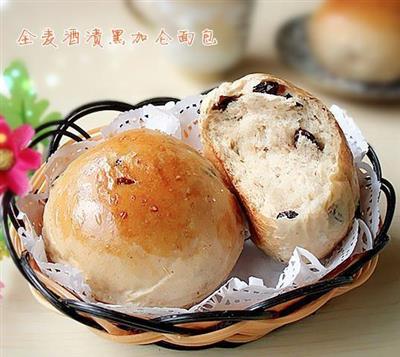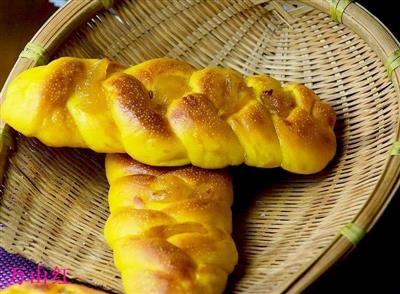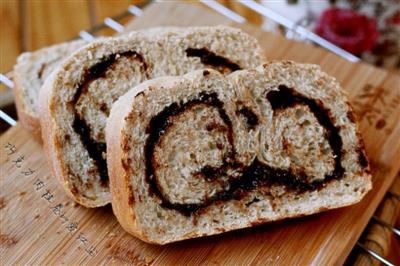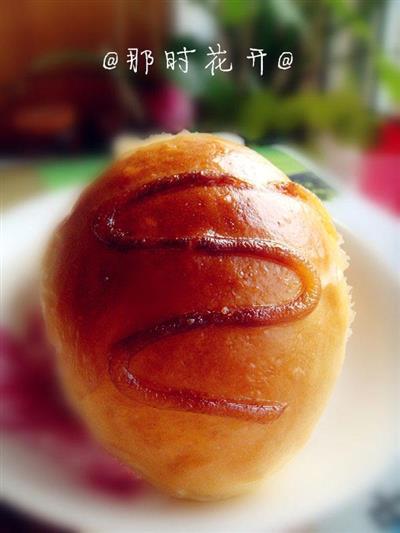Bread from New Orleans
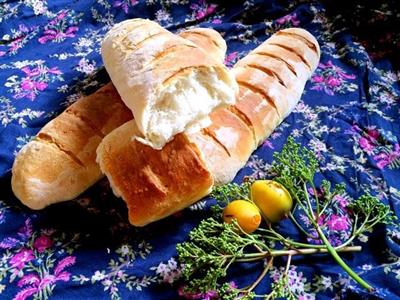
Because in pursuit of the American spy dream, I was inspired to cook Russian cabbage soup.But what kind of soup should go with the bread? The Russian grumpy is too rough, I myself am not satisfied; in line with the theme of the American drama, the Russian soup should go with the American bread.But American hamburger sandwiches don't need to be dipped in soup.The farmer said that the taste of this bread is actually very similar to the cottage bread sticks that he used to buy in Shanghai when he was a child, the soft tissue can be pulled out whole, and the crispy, hard shell is left to eat.That's it, get to work!
WHAT YOU NEED
Ingredients
225 grams of high starch flour150 grams of wheat flour45 grams of rice flour300 grams of water4.5 grams of low sugar yeast10 g of white sugar6 grams of salt5 grams of milk powder10 grams of butter
How TO MADE Bread from New Orleans
Steps 1 to 4
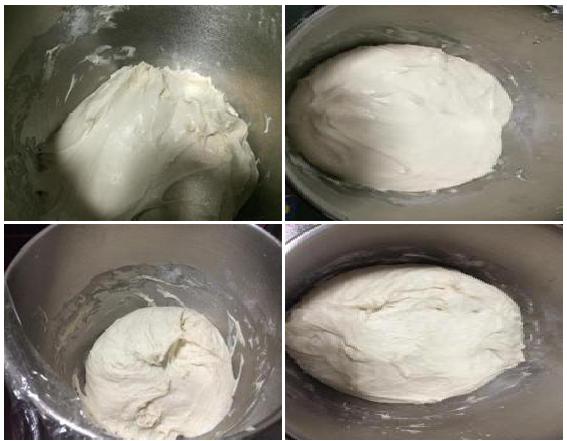
1. Mix various powders, water, sugar, milk powder, autolyse (soak) for 30 minutes, add salt and yeast, knead until firmness begins to form, add softened butter, knead until the film comes out (between the expansion stage and the completion stage)
2. The good dough is put in a fermenter and fermented for about 80 minutes, twice as much.
3. Fold at 50 minutes of exhalation (fold the whole dough from the center to the edge, with a gentle gesture, folding the whole dough)
4. After fermentation, the folded dough doubles in size.
Steps 5 to 8
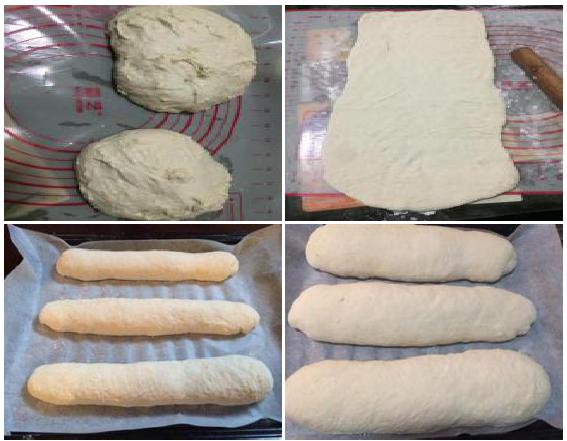
5. Split in two, exhale, roll around, relax for 20 minutes.
6. Later, he found that his grill was too short, and he could only divide the dough into three parts, each into a rectangle of 30 by 15 centimeters.
7. Roll up, pinch tightly, rub both ends, slightly lengthen to 4 baking trays of appropriate length, and place on a baking tray of baking paper.
8. The second fermentation at room temperature is twice as long, about 45 to 60 minutes.
Steps 9 to 12
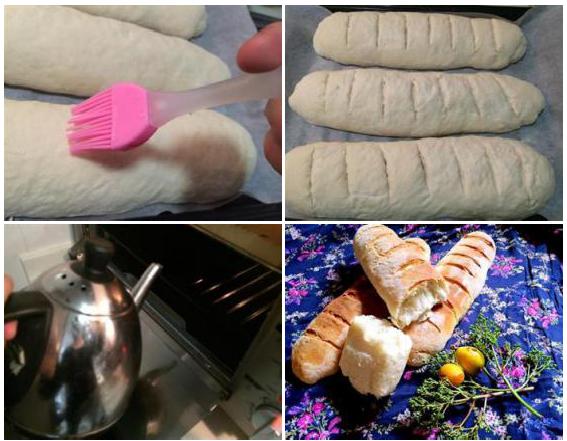
9. Surface moisturizing and cutting
10. Note that this type of bread is not cut in the same direction as the traditional one, it is more horizontal, it does not need to be tilted into the knife, and the dough can be vertical.
11. Put an empty grill in the oven, preheat to 250 degrees, pour a little boiling water into the grill to produce steam, close the door.
12. Put the pan with the dough in the oven, add a glass of hot water to the pan with the water below, and close the door.
Steps 13 to 16
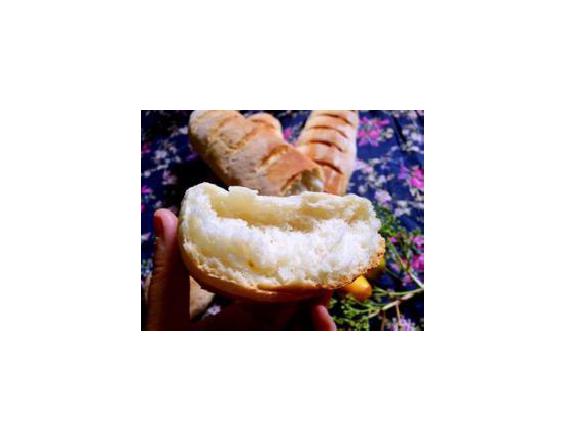
13. Bake at 210 degrees for 20 minutes, cool to 190 degrees and bake for about 20 minutes until the bread is golden yellow.
14. Baked bread
15. And the inside is so soft that you can squeeze it out, just like the kind of wooden sticks that used to be sold in Shanghai bakeries when I was a kid.
Handy cooking tips
The way we usually knead the dough is to knead the dough until it's fully developed, which is to say, the membrane is removed, which is what this square requires.This intensive mixing is initiated by a very uniform density of the dough, which is suitable for a dense toast, and the finished bread is also very large, but the dough is different, the dough also needs toughness, otherwise it does not develop, but this toughness cannot be as regular as the dough, it needs a certain gap and elasticity to accommodate and contain the air pores produced in the fermentation baking.On the other hand, kneading is a process of oxidation of flour, and oxidation has a destructive effect on the flavor of the bread, the longer it is kneaded, the lighter the flavor of the dough itself, which has little effect on the sweet bread with more additives, soft bread, because the flavor of the additives can compensate for the lack of the flavor of the dough, but the crazy thing to eat is the flavor of the flour itself, after being kneaded, the color of the internal organization of the finished product will be pale, and pale and tasteless, many experiments have clearly confirmed this phenomenon.It's very simple, autolyse plus stretch & fold.Autolyse is the mixing of ingredients other than salt and yeast and leaving for 20 to 60 minutes (depending on the strength and moisture of the flour), during which time the flour completes the absorption of water and begins to produce firmness.Salt, yeast and yeast have the effect of tightening the strength, so it should be added after autolyse is completed, but the liquid yeast should be added first, so that the flour does not have enough moisture.Stretch & fold, as I've shown here, is usually done during the main fermentation process, one to four times, with an interval of at least 20 minutes.I think it's unbelievable that simple soaking and folding two or three times can replace the dough for so long, so hard? I had resistance at first, it was easy to beat KA, I also practiced the technique of rubbing the film by hand, now I don't need it anymore? I can't accept it! But the fact is more than eloquent, after soaking, it would have taken KA more than 10 minutes to make the film dough, 6 to 8 minutes.When I made this bread, I soaked it for three minutes and then it stopped, and the dough was just elastic, it didn't even expand, but when I folded it once, I fermented it for 30 minutes, and when I folded it again, I could pull out a very thin film.After 30 minutes, I folded it again, and the dough was smooth, and that's what fermentation and folding did to the dough.After improving the kneading method, the finished product is much better organized, and the holes are obviously more.It seems that the principle of iron hands, velvet gloves, and not overworking the dough is not only used in the forming phase of the stick, but also in the kneading phase.So there's no end to learning, there's always new technology that's more effective than existing knowledge, you can't just shut it down.
REACTION RECIPES
- The classic heavy cheese cake is 6 inches thick.
- Chocolate foam
- Six inches of yogurt
- Banana cake rolls
- Sweet walnut pie
- Sweet and tasty - strawberry cheese cake
- Sweet potato muffins
- Pineapple pie
- Cake of the wind
- Castor beef stew
- Failure - Tiramisu
- Cheesecake from Manhattan
- Cream of wheat
- Dried dates
- What is the name of the city?
MOST POPULAR RECIPES
- Black tea and fries
- I'm not sure what I'm doing.
- Cake decoration
- Candy salad cake
- Carrots and cranberries
- Chocolate cake
- Chocolate leaf cake
- Electric rice cakes
- Light cheese cake
- Love is a sponge cake
- Yogurt and light cheese cake
- Microwave cakes
- Low-carb tofu cake
- Microwave cakes
- Basketball and cake

 DESSERTS
DESSERTS  BAKING
BAKING  MAIN DISHES
MAIN DISHES  SNACKS
SNACKS  CHINESE FOOD
CHINESE FOOD  HOME
HOME
